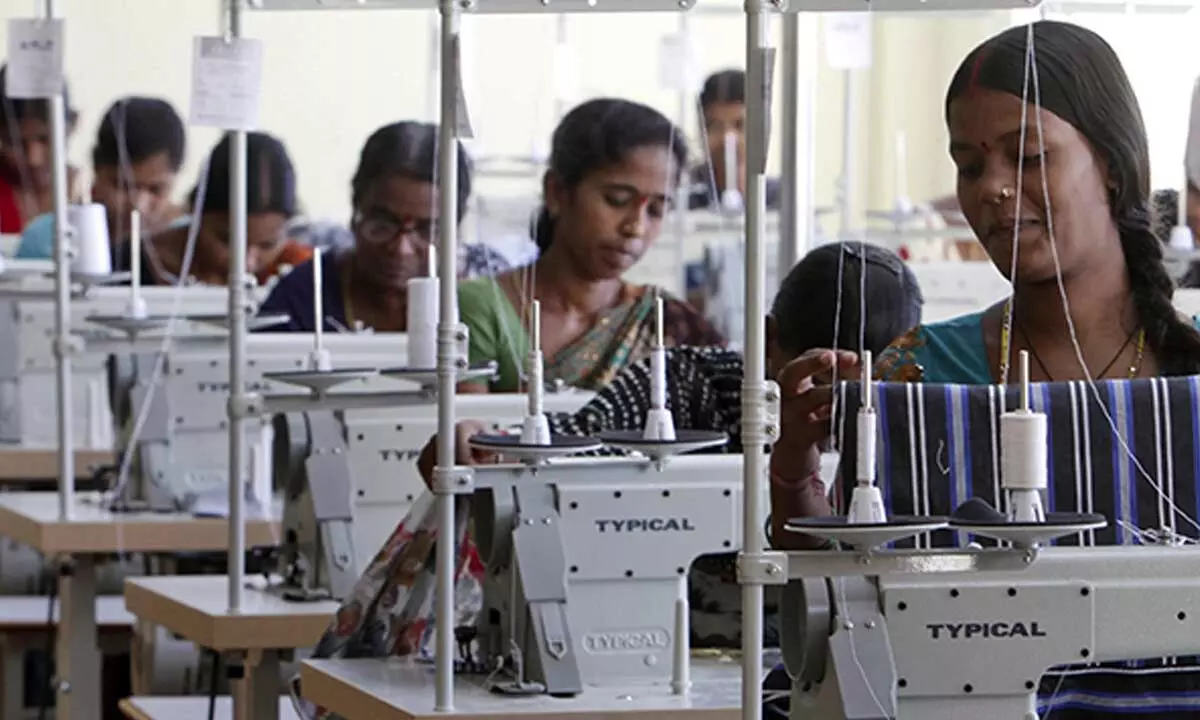Garment workers struggling to get a living wage in India
They need support from all stakeholders of the industry
image for illustrative purpose

Whatever the recent major developments we have noticed in our textile and clothing industry, like strong recovery after two years oftextile setting the ambitious export targets and good performance in export, the high price of cotton and now impact of inflation… our workers have been neglected. And they are more under pressure now due to the rush of work. Workers are the base of this industry, but I have no doubt to say that majority of them are not getting what they should get.
There is always a debate on minimum wage, fair wage, a living wage, piece rate working, overtime and other kinds of payment structures for the workers. In many states, the minimum wage gets revision on a regular interval. In some states, sometimes issues arise with the hike in the minimum wage and the matter goes to court for years.
Here is an example, just a few months back there was an interesting development in the favour of workers. After almost two years of refusing to pay the legal minimum wage, some garment manufacturers in Bengaluru finally committed to pay the legal minimum wage, along with all arrears owed, to their workers. And this amount was Rs446 crore. This could happen with the efforts of a local union and international organization working globally for labour rights. These organizations work to hold clothing manufacturers and their international brands accountable for any underpayments. The matter has complications of proclamation suspending the minimum wage increase by state and court proceeding but finally, workers got the things in their favour.
In India, a few factories are even paying little more than minimum wage to their workers but the larger picture is different. The majority of workers are just getting minimum wage which is not sufficient for their basic needs as they are migratory workers and have the extra cost of living in the cities where the factories are. The condition is even worst when the minimum wage is not being paid especially to the newcomers who are unskilled and appointed helpers. With overtime, workers may get a reasonable amount but for them also work-life balance is equally important. Factories, brands (especially international) governments, NGOs and unions or worker committees are four major stakeholders in the wage scenario. And for a combined win-win situation, all have to work together and have true spirit.
The factory can't pay if it will not get a fair amount from its clients, these clients (brands, retailers) are under the pressure of market forces but as they claim doing business ethically, they have to pay more and increase their product price. There is nothing wrong if they present to their customers in a way that their clothes are a little costly as a certain amount is going to the workers. Aware customers will not mind paying a little more for this and as tracing technology is easily available, it will be a completely transparent process. As of now, very few international brands are following the concept of living/fair wage, which definitely needs to increase.
And NGOs and unions have to act fairly creating genuine pressure and following the legal path can be an option for them. Their pressure has worked earlier also and here is a perfect example. Around 1,000 sacked workers from a Thailand-based garment factory will receive $8.3 million as the globally renowned lingerie brand purchasing for this factory contributed to the settlement via a loan arrangement with the factory's owners. In this massive success for workers, the role of an international workers rights group was instrumental. Many of these workers who had worked at the factory for more than 10 years did not receive severance payouts mandated under Thailand's law. Union and State governments have many welfare schemes for the weaker section of society. There are policies where Governments bear some share of workers' wages so they allure investors to invest in their states. When there is an incentive for new investment, why can't government support the existing one?
Government can provide housing for migratory workers or support the factory's hostels, and dormitories. It will help workers to save money on their existing wages and factories will also get motivated to make such facilities for their workers. A few years back, the clothing industry demanded the integration of NREGA scheme with clothing manufacturing. But it couldn't happen. There was nothing lacking in the industry proposal as workers were supposed to get work, the industry would be getting enough manpower and the government could save direct cash outflow under the scheme. As inflation is touching the sky, the industry needs more workers and options for workers are increasing apart from the clothing industry, this is the high time to think and work for workers.
(The author owns a garment manufacturing setup in a rural area, which employs mostly women workers)

